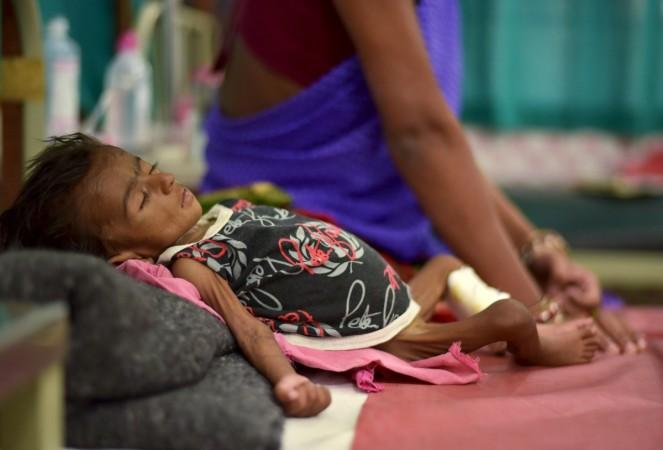
India figures at the top of the global list of countries with the most number of hungry (undernourished) people, according to a report released by the Food and Agriculture Organization of the United Nations. India had nearly 195 million undernourished people in 2014-2016, which is the largest in the world, the report showed.
Although India has witnessed a decline in the rate of undernourished population by 7.4 percent since 1990-92, it is nowhere close to the progress made by China in addressing the concern. China has registered an impressive 54 percent decline in its undernourished population since 1990-92 and had 134 million undernourished people in 2014-2016, according to the report.
The report describes undernourished/hungry people as those who are unable to eat enough food to live an active and healthy life.
The report said that currently one in nine people in the world is undernourished. "There are 795 million undernourished globally, down by 167 million over the last decade, and 216 million lower than in 1990–92," it added.
The U.N. said that a majority of the hungry population is present in the developing regions of the world, although even the low and middle-income countries have made staggering progress in overcoming the concern of undernourishment.
The report said that India too has made great strides in reducing the proportion of food insecure persons in the overall population. Also, India's numerous social programmes are likely to continue to fight hunger and poverty in the country.
In 2000, the countries adopted the U.N declaration for achieving eight Millennium Development Goals (MDGs), including the one on halving hunger and extreme poverty rates by 2015.
Since 1990–92, over 216 million people have been rescued from a life of hunger and 72 countries have already reached the target to fight hunger, with another nine just short by a small margin, the report said.
It highlighted that measures such as availability and accessibility of sufficient and good quality food need to be taken for the rest of the countries to achieve MDG.
"Good governance, political stability and the rule of law, and the absence of conflict and civil strife, weather-related shocks or excessive food price volatility, are conducive to all dimensions of food security," the U.N report added.


![Miss Universe 2024: India's Rhea Singha slayed swimsuit round but failed to reach Top 12 [Watch] Miss Universe 2024: India's Rhea Singha slayed swimsuit round but failed to reach Top 12 [Watch]](https://data1.ibtimes.co.in/en/full/806361/miss-universe-2024-indias-rhea-singha-slayed-swimsuit-round-failed-reach-top-12-watch.jpg?w=220&h=135&l=50&t=40)


![Miss Universe 2024: India's Rhea Singha slayed swimsuit round but failed to reach Top 12 [Watch]](https://data1.ibtimes.co.in/en/full/806361/miss-universe-2024-indias-rhea-singha-slayed-swimsuit-round-failed-reach-top-12-watch.jpg?w=220&h=138)

![Miss Universe 2024: India's Rhea Singha slayed swimsuit round but failed to reach Top 12 [Watch]](https://data1.ibtimes.co.in/en/full/806361/miss-universe-2024-indias-rhea-singha-slayed-swimsuit-round-failed-reach-top-12-watch.jpg?w=220&h=135)


